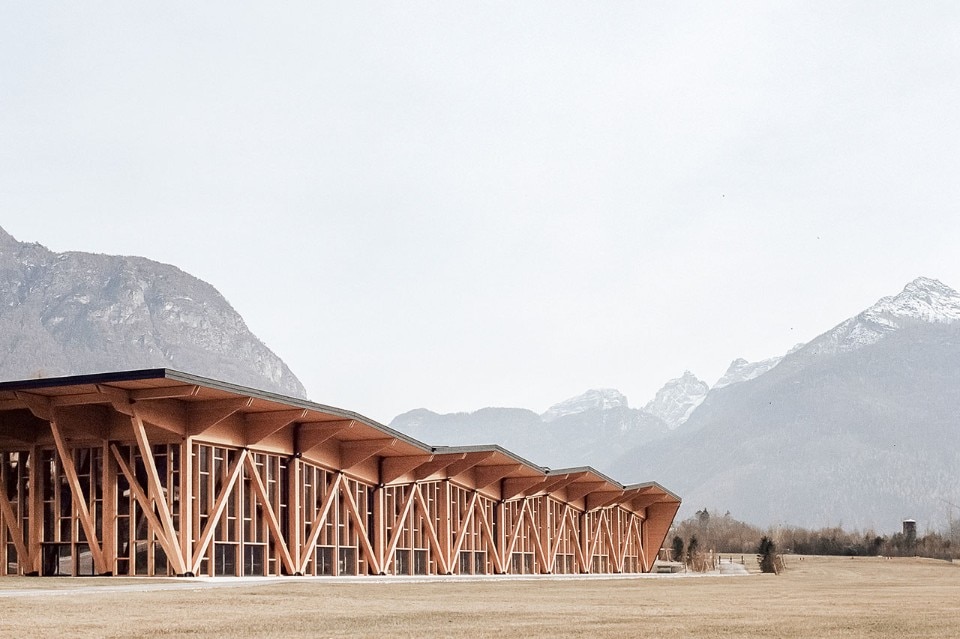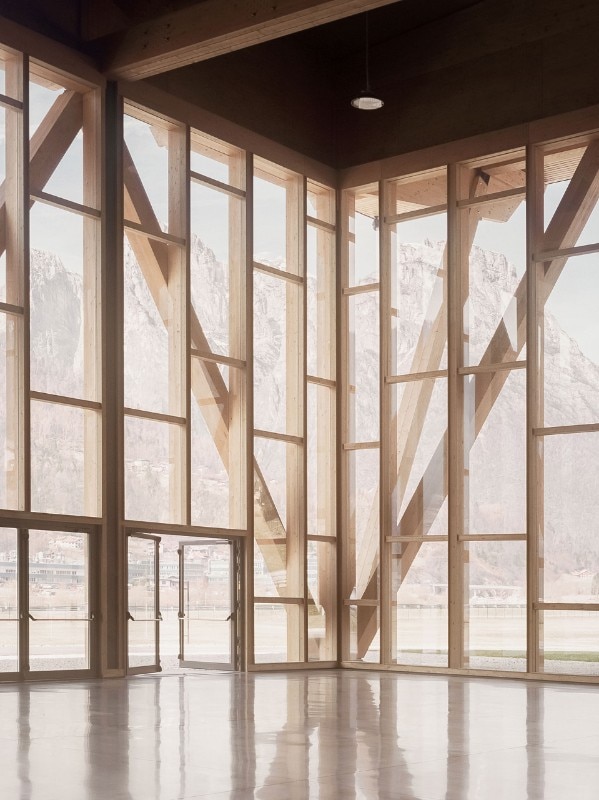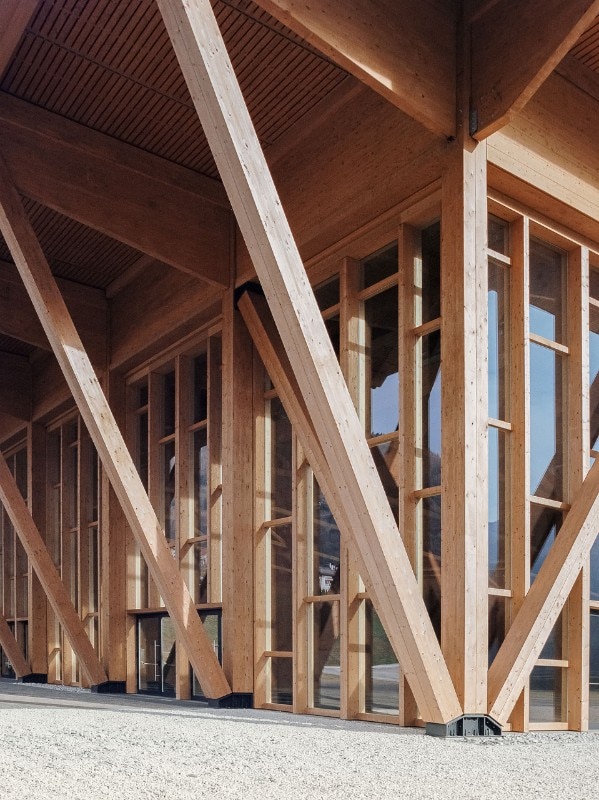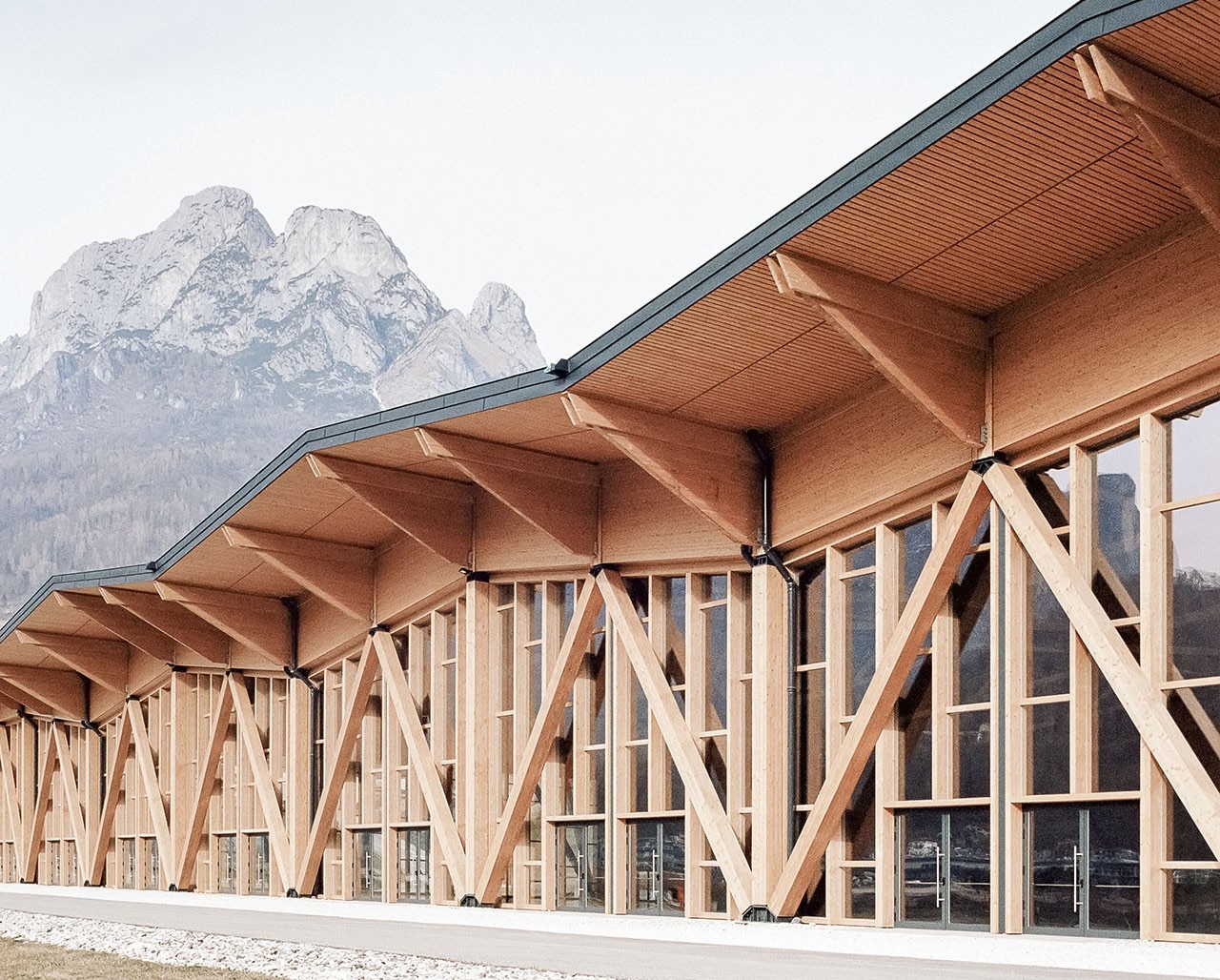Looking at the pavilion designed by the Bressan and Botter studios, the first associations that may come to mind are the (concrete) gyms of the Ticino masters Luigi Snozzi and Livio Vacchini or the younger Baserga Mozzetti. However, we are not in the Ticino valley, but on the other side of the Alps, in Agordo, province of Belluno. Of those references, however, only the modularity and expressive correspondence between form and structure remain. The Bressan and Botter studios have chosen glulam timber to cover spans of almost 45 meters, creating a large, multi-purpose, single hall pavilion.

The concept is due to the younger members of the two studios, Emanuele Bressan and Andrea Botter, colleagues at the university who have gained experience in Ticino. They tell, however, that in the design phase of the project, the primary reference was the tabià, “traditional wooden buildings often used as barns” that populate the entire Agordo valley.
The pavilion, almost as big as a football pitch, behaves “substantially like a reticular beam resting on the ground, which absorbs the horizontal thrusts of earthquakes and winds” and appears “embedded in the profile of the mountain but open towards the valley” says Emanuele Bressan. The result is the repetition of the same module along a perimeter of 120 by 60 meters. Each of these modules alternates vertical pillars with diagonal stiffening struts: these spans “exhibit the static appearance of the pavilion” by matching the image of the building to its structure. The inclination of the last two pitches of the roof towards the north, emphasizes the entrance while differentiating the elevation. The south and east façades are opaque, while those to the north and west open onto the mountain landscape.

“It would not have been possible to complete the project so quickly without the support of the two family firms and the professionalism of the construction team and those who coordinated it,” stresses Bressan. While planning started in February 2017, the first private event took place in December of the same year, while the completion of the finishings occurred in October 2018.

The center was born from the need of the client, a well-known local company historically attentive to the dynamics of its territory, who needed a permanent space for activities previously carried out in temporary structures. The large stereometric volume is subdividable to adapt to a variety of uses. Indeed, the building has been conceived to host the company's events, but, at the same time, it can be used by private third parties and the local administration, thanks to the agreement stipulated with the Municipality.
In 2021 the project won the Architecture Award City of Oderzo XVII edition, awarded as an expression of a presence of architecture on the territory “capable of qualifying it with an intervention of architectural quality and social value”.
- Project:
- Congress and exhibition centre
- Location:
- Agordo, Italy
- Architects:
- Studio Botter, Studio Bressan
- Project architects:
- Andrea Botter, Emanuele Bressan, Sandro Botter
- Structural consultancy:
- Fabio Valentini
- Main contractor:
- Imola Legno
- Area:
- 6,400 sqm
- Completion:
- 2018

PNA International Forum
An international event exploring the potential of natural stone in modern design and architecture will be held at IUAV University of Venice.


























